Kendal and Collin Strachan are commercial adventure photographers who live in Alaska full-time off-grid in their 2018 33-foot Airstream Classic. After traveling the country coast to coast and spending a couple of years chasing sunshine in the southwest, they got the urge to head north. Now, more than 20 years after Collin’s first Airstream trip and Kendal’s elementary school love for Polar Bears, the couple has become a family of three with the addition of a new baby. Experts at traveling and exploring Alaska's wilderness, we asked the Strachans to create a Round Trip guide for other Airstreamers who want to experience this great northern adventure themselves.
So you’re dreaming of taking your Airstream to Alaska? Don’t worry! You’re not crazy, and yes, you can do it! While the journey is long, a summer trip to Alaska with your Airstream in tow will be an adventure that you reflect on for the rest of your life – or even better, turn into a tradition! Read on for tips and advice on how to maintain your Airstream on the road and return home with the same amount of rivets, tires, and dishes you left with – plus, where to camp, hike, eat, what tours to take, and so much more. Let’s hit the road!
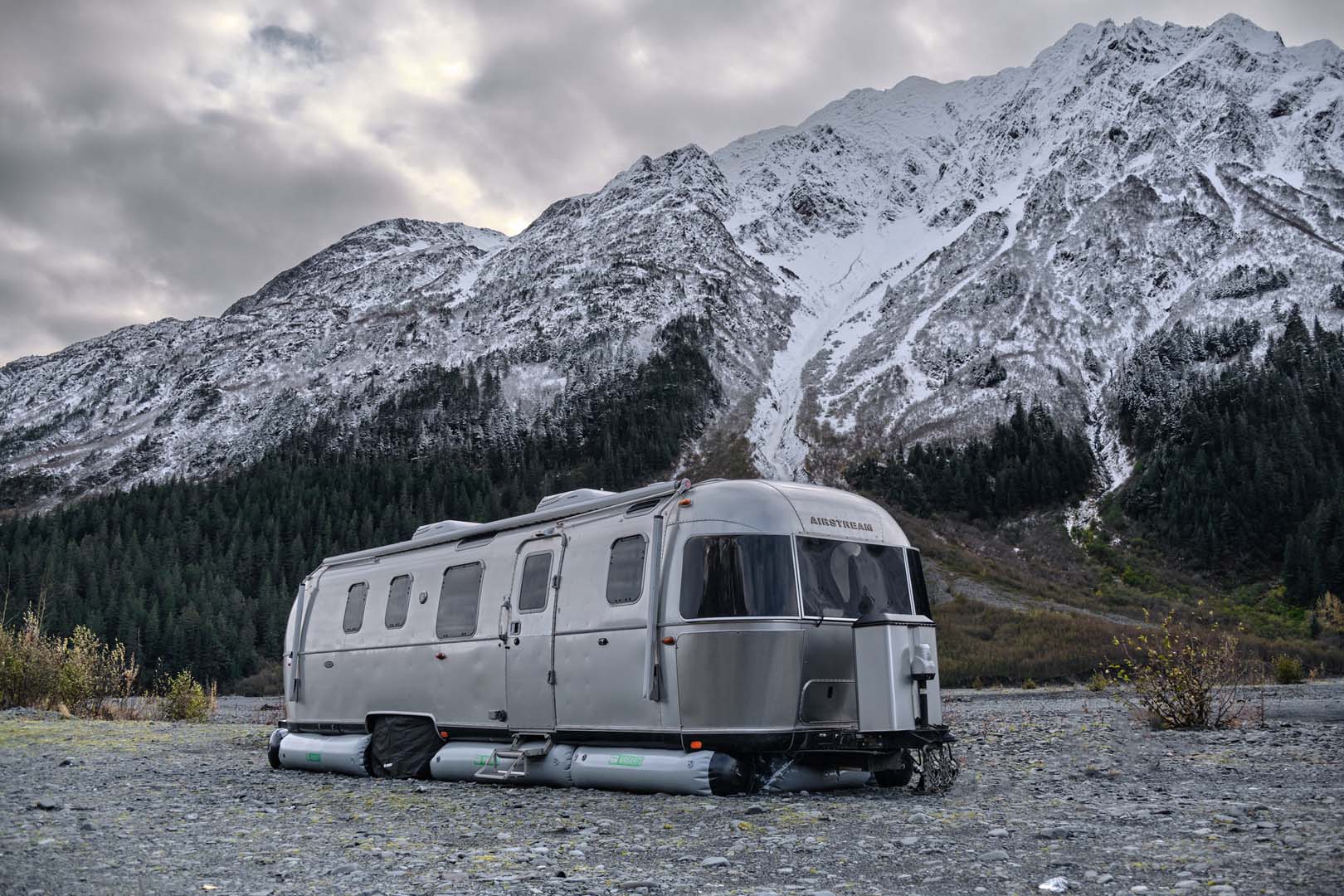
What to Expect When Towing Your Airstream to Alaska
Much ado has been made about the trek across Canada to Alaska. Will you drive the Cassiar or the Alcan? Will you spend time visiting Canada’s breathtaking national parks or power through to your final destination?
Because there is already a tremendous wealth of knowledge out there on this subject, we’ll focus today on what to do once you’re in Alaska. This itinerary, which focuses on visiting the Kenai Peninsula and spending most of your time around Kenai Fjords National Park in Seward, could be accomplished with just a week or two in the state, or across an entire summer! Whatever amount of time you have, consider Alaska a possibility for your excursion.
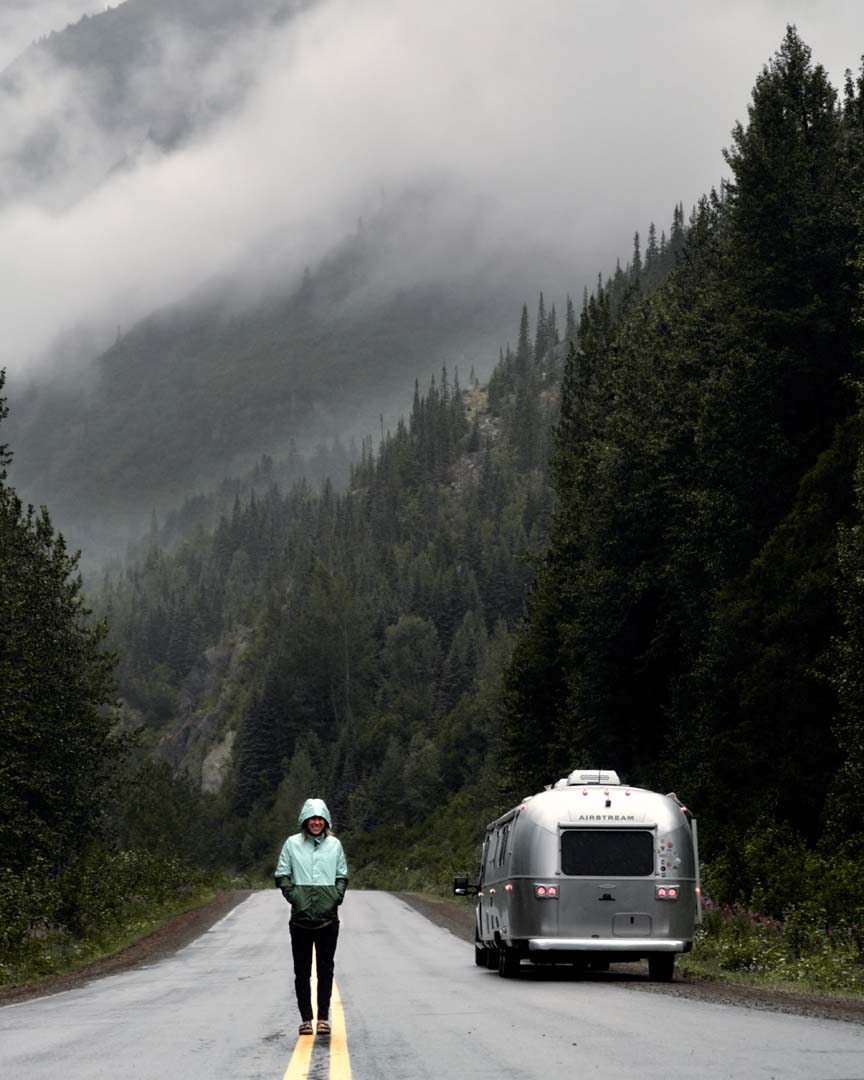
First things first, we’ll discuss caring for your Airstream while on the road. As someone who has made the investment and added an Airstream to their family, it goes without saying that your goal is to love your home away from home as dearly as possible and to see it come away from each outing with more memories and less wear. While you may have heard that the Alaska Highway is hard on trailers, the truth is that with some diligence and a little extra time, you’re sure to make it down to the Kenai Peninsula safely.
Rumors about the Alaska Highway and How to Care for Your Airstream While on the Road
The reason why our roads have a bit of a rough reputation is a delightful little feature we like to call “frost heaves.” As you drive closer and closer to the Arctic Circle, you begin to move across large areas of “permafrost,” or permanently frozen ground. This doesn’t mean you’ll see an ice-age-looking frozen tundra.
There is the usual complement of soil and vegetation on top, but starting at 10 or so feet below the surface, there is a layer of earth that is impacted deeply by climate conditions and in constant motion. As such, where you’d expect an interstate highway to be flat and smooth for hundreds of miles, on the Alaska Highway, you’ll come across sudden depressions in the road that, if hit at a high enough speed, will heave your rig up and down as you go through them. There are no “dip” or “bump” signs to warn you of them, and when you’ve been driving a couple of thousand miles, it can be a bit tiresome to remain on the lookout for frost heaves. As full-time Airstreamers in Alaska, frost heaves are an almost everyday occurrence for us. But there are some tips that will help you navigate as you make your way north.
Three Tips for Handling Frost Heaves
- If you’re aware that a road has frost heaves, keep it below 55mph. The highest speed limit you’ll find around here is 65, so you’re not losing much time, and the shortened braking distance is well worth it.
- A great hitch/suspension combo will dampen almost all the undulation from a heave.
- Pro tip: The worst frost heaves always have double tire marks on them from 18-wheelers whose trailers skip when they fly over. As you’re scanning the road, if you see a sudden little strip of tire marks, begin to slow down.
And it’s as simple as that! Frost heaves will not destroy your trailer and by no means should a road’s spotty reputation keep you from visiting one of the most geologically special places on earth. If you do goof a time or two, be prepared to care for your rig with the Airstream Rivet Kit available at Airstream Supply Company. In high-flex areas such as the door frame, you may lose a rivet or two. This simple, easy-to-use kit will allow you to maintain the strength and water seal that makes your Airstream so valuable. Quite frankly, it’s invaluable no matter where you go. Rivets occasionally fail and if you do any distance, it sure doesn’t hurt to do a quick walk-around and make sure things are ship-shape.
Now that we’ve addressed those pesky rumors about driving to Alaska, let’s get to the fun stuff!
Groceries and Fuel in Anchorage
Naturally, you’ll make your way to Anchorage for gas, fuel, and a nice rest in the RV-friendly Cabela’s parking lot on King Street – arguably the most popular “I just got to Alaska today” RV spot. Groceries are limited to Kroger (Fred Meyer) and Safeway, but Anchorage also has a Costco, so a membership there will provide more options and savings – plus great fuel prices. Seward is a small town with only one grocery store, so high prices and product shortages are the norm. It’s best to load up in Anchorage before heading down the Kenai Peninsula.
Driving the Seward Highway
It’s 127 miles from the Cabela’s parking lot to our favorite park in Seward (On the dot – I’ve tracked it too many times to count). Expect a drive of a little over two hours. The Seward Highway is quite RV-friendly, so you can expect it to be mostly bump-free on your way down the Kenai Peninsula. While you might be in the mood to get straight to where you’re headed, a drive down the Seward Highway in the summer is a magical experience, so it’s best not to be in a rush.
First, about 30 miles in, you’ll reach Beluga Point, a lookout aptly named, as you’re likely to see summer beluga whales making their way along the coast as they take advantage of the current of an incoming tide. Look out for pods of white whales breaching as they cruise along. You can stop and watch, but they’ll also remain visible for miles from the window as you drive!
A Quick Pit Stop in Girdwood
As the road turns away from the bay and the belugas go out of sight, you’ll reach the mountain resort town of Girdwood. If you’re ready for lunch, you have options: Stop in and eat at the famous Chair 5 diner, Bruceskis (a Mediterranean food truck), or the Girdwood Brewing Co. for a bite and local beer on tap. Once you’re fueled up for an adventure, you can hike Crow’s Pass up to an incredible overlook of Raven Glacier (moderate to intense), or stroll around the Alyeska Resort’s gorgeous walking trails. Great advice if that burger is sitting a little heavy!
After Girdwood, it’s time to head to Seward. Unless, of course, you’d like to do some more glacier spotting. In another 10 miles, take a left out to Portage Glacier and find yourself surrounded by incredible glaciated peaks and salmon-filled creeks. At the end of the road, just before the tunnel to Whittier, you can stop in at Portage Glacier Lake and take a short cruise out to see the glacier or pull out those kayaks and paddle about a mile back until the toe comes into view. If you choose to kayak, remember to maintain a distance of at least 100 feet from icebergs that have separated from the glacier. Though they look still and majestic, they are actively melting and can pitch and roll, creating waves that may capsize a boat.
On to Seward
Ok: Glaciers seen. Belugas spotted. Bellies full. It’s time to drive the last hour or so to your summer destination. Now that you’re away from the bay, you’ll head over Turnagain Pass and down the hill into Seward. Situated on the iconic Resurrection Bay with mountains towering around on all sides, Seward is a sleepy little coastal town of about 3,000 in the winter which grows to about 50,000 at its summer peak on July 4th, while spectators from all over the country come to celebrate our independence and to watch the famous Mount Marathon race, a 3-mile run straight up the side of Mount Marathon and back down again.
Camping in Seward
There are several options in town for RVs, but one of our favorite places to camp is right in town on the bay. The Seward Waterfront Park offers both hook-ups and dry camping, and many of the sites allow you to walk right out of your door and to the water in a few steps. With your windows open to the bay, you’re guaranteed to see a host of sealife including adorable otters and sea lions, and very likely to see a breaching grey whale or even a pod of orcas just off the shore. If the salmon are running, you’ll also see excited fish literally jumping out of the water on sunny days as they make their way to freshwater streams to come back to where they were spawned and create a new generation of salmon. Check out Seward’s booking system online, or one of the popular camping apps for ideas on where to stay during your time here.
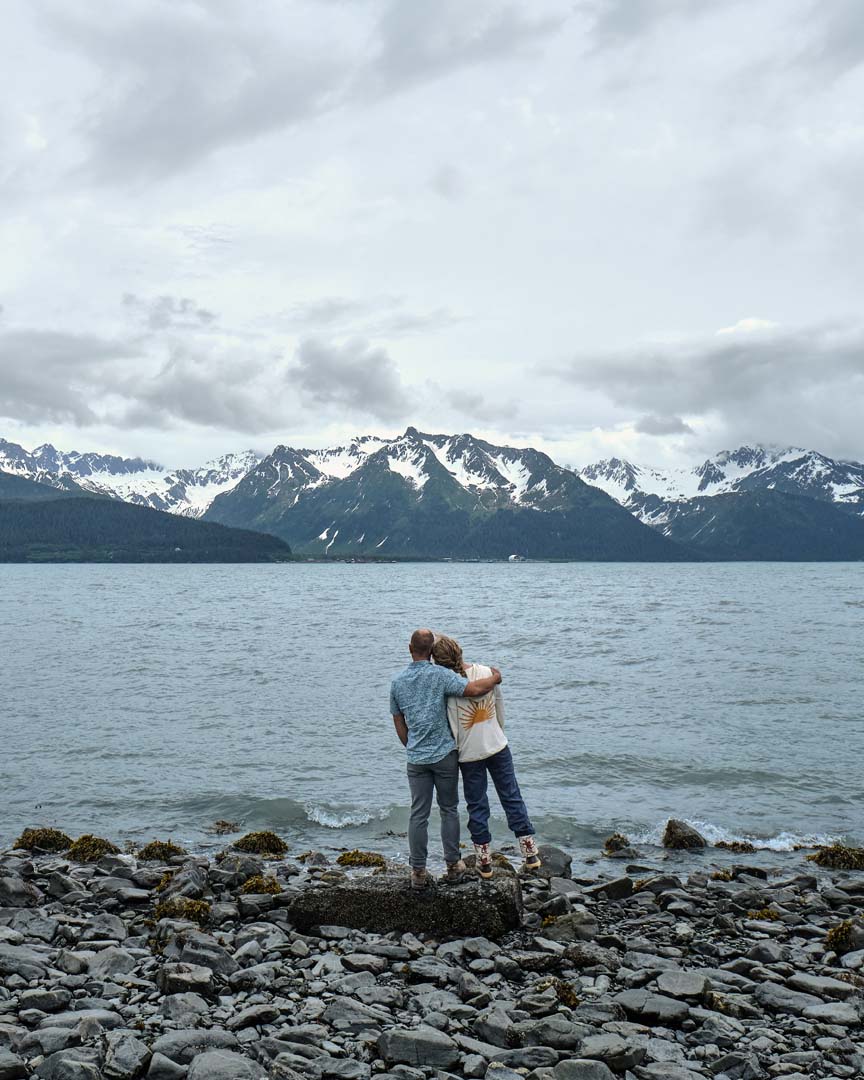
If you’re into boondocking, Alaska is the place for you. In general, boondocking in Alaska is very easy and even welcomed. Any pullout or spot without a no camping sign (apart from private property) is fair game, and you most likely will never be bothered. If you goof, a trooper may ask you to bump down the road to an approved spot, but even then they'll be polite and generous. Many times on long road trips, we’ll spend a night in a pullout on the side of the road and wake up to awesome views. Alaska has huge amounts of public land, so many spots are not too crowded. You can typically find water and a dump station at most gas stations as well as showers in most laundromats.
If you’re new to boondocking, a couple of upgrades will go a long way. Airstream’s partnership with Battleborn batteries means that you can now easily upgrade your Airstream, new or old, with a powerful lithium system complete with solar panels that keep you charged up no matter how long you’re off the grid. We have a Battleborn system with a 3,000-watt inverter, and with Alaska’s 24-hour sunlight, we never even dream of touching our generator for the entire summer.
An important consideration when boondocking in Alaska is heat. You’ll never really need an air-conditioner during the summer, but on cool mornings when temperatures are still in the high forties or low fifties, reliable warmth goes a long way. Many Airstreams come with a propane furnace, so propane will be an essential resource if you're not hooked up to electricity.
Finally, a way to carry water from the park in town to your trailer is a huge time-saver, so that you don’t have to move as often to fill up. We have a 60-gallon water bladder in our truck, along with a Clearsource Nomad filter/pump so we can fill up our fresh tanks without moving the trailer.
Hiking in Seward
Once you’re settled in and you’ve taken in your bay views, you’ll be excited to get out for a walk on the coastal walking trail in town, or out to one of the beautiful hikes the area offers! For those who enjoy a simple stroll or have accessibility needs, Kenai Fjords National Park offers a paved, 1-mile (2-mile round trip) walking trail with incredible views of Exit Glacier, along with the paved coastal trail in town. Also in Kenai Fjords is the 9-mile round trip Harding Ice Field trail, a more strenuous hike that will take you into the mountains and provide views not only of Exit Glacier but of the largest ice field in the United States, which feeds the incredible glaciers that call Kenai Fjords home.
Outside of the park, Caines Head – which begins on Lowell Point – offers both mountain views and an incredible, pristine beach tucked into an untouched little mountain alcove. It is about 3.5 miles round trip and is moderately difficult, but not too challenging. Be sure to check tide charts and hike at low tide to gain access to the incredible beach.
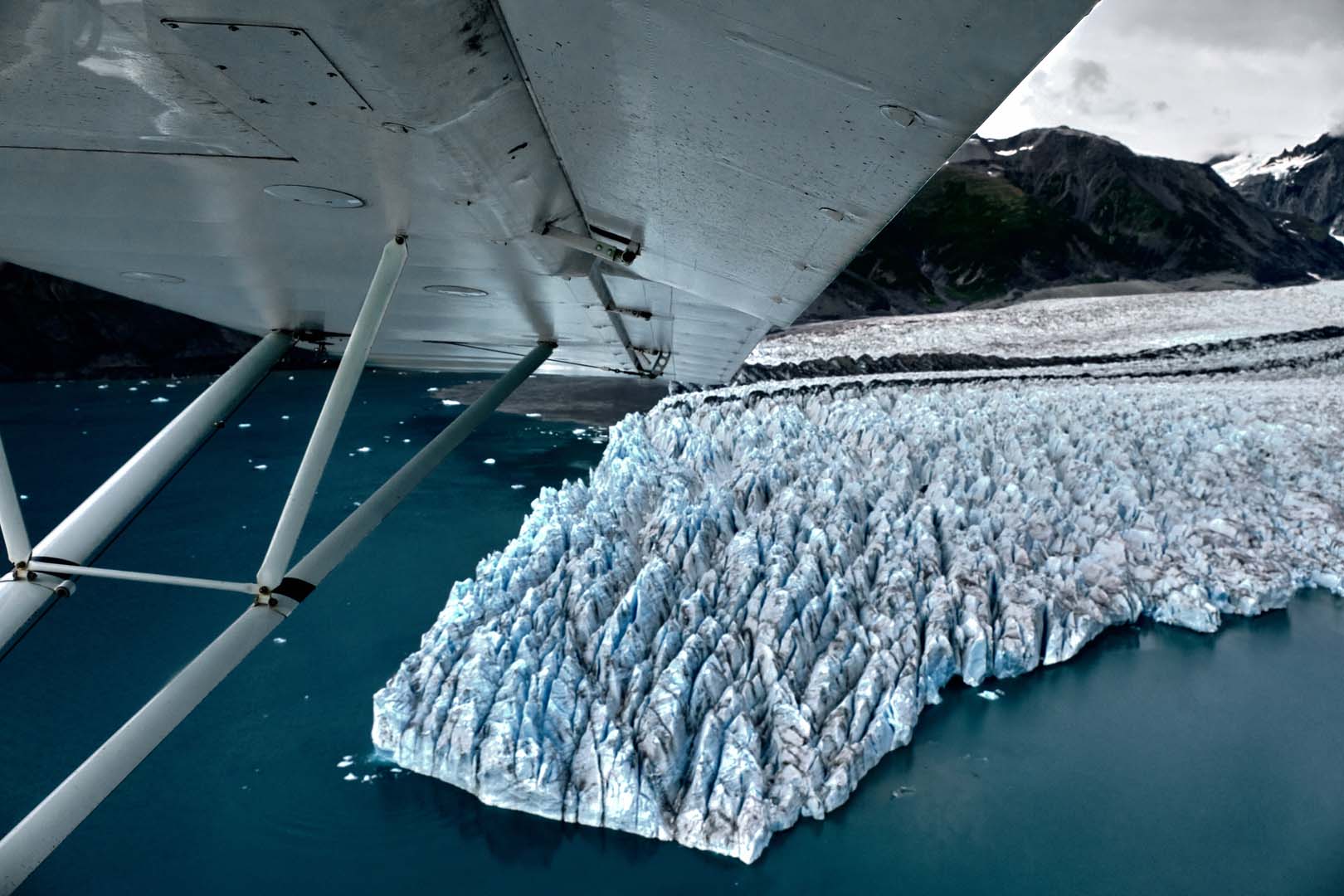
Lost Lake, which begins just a few miles north of town in the Bear Creek area, is a runner’s/mountain biker’s paradise. It’s a 7-mile one-way trail with a very little elevation gain that leads through the mountains to a beautiful blue lake whose incredible seclusion in its mountain meadow lends itself perfectly to its name.
And finally, perhaps the most popular hike in Seward, you can hike the Mount Marathon trail and gain a panoramic view of the town, Resurrection Bay, and the surrounding mountains. It is a relatively steep, four-mile trail that leads to the summit, where you’ll share in the victory of climbing the mountain that thousands of runners have enjoyed in years previous. Climbing the runner’s trailer is an arduous hike at best, but if you start at the jeep trail, you’ll find a nicely maintained trail with switchbacks and clear markings.
Tours and Fishing
Once you’ve had enough of walking (no judgment! Alaska is HUGE!) there are several incredible tour options to dive even deeper into the scenery and ecology. If you’d like to explore Kenai Fjords by water, one of Seward’s Marine tour companies is the way to go. Boats launch from the harbor less than a mile from your campsite and offer sightseeing and whale-watching tours in the bay and beyond. A fjord is a body of water with mountains rising directly out of it. As you look at the mountains surrounding Resurrection Bay, imagine that they are just the tip and that their soaring cliffs extend hundreds or even thousands of feet down into the water.
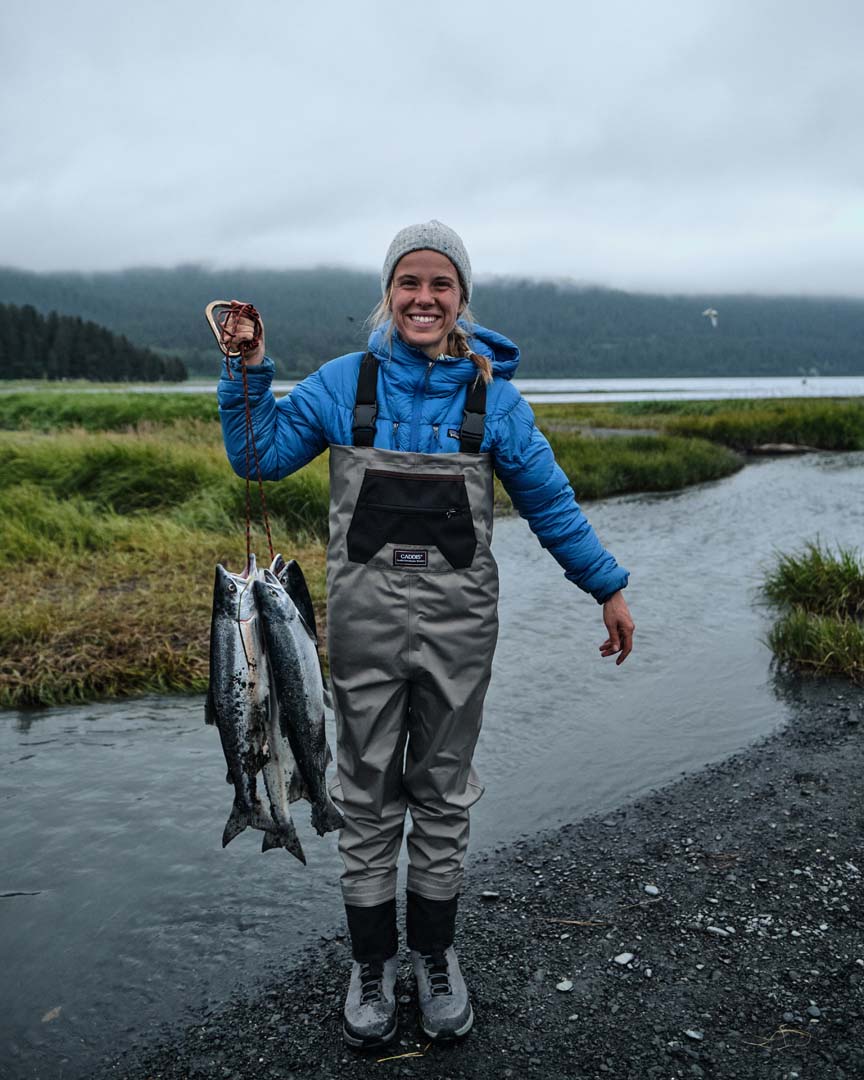
If you’d like an aerial view, there are several companies operating flight tours out of Seward’s municipal airport in both helicopters and airplanes which include a scenic tour of the landscape and even fun upgrades like glacier landings or Mount Marathon drop-offs for those who like hiking down, but not up. (Again, no shame. We are photographers and fairly regularly swap out hiking to a location in favor of a heli-drop for a photo shoot!)
In addition to the sightseeing tours, many tour operators in the area offer salmon and deep-water fishing charters. Whether you’d like to fish for salmon from the beach as they swim upstream or head out in search of 70+ pound halibut, Seward’s fishing guides are sure to fill your freezer.
Where to Eat in Seward
Once you’ve worked up an appetite and feel like you could eat a moose (or 1,200 pounds of vegan alternative), there are options for you. While Seward has a vibrant restaurant culture, one of the fun things about its summer visitors is that a huge variety of delicious food trucks circulate throughout the season. It’s likely that if you’re in the mood for it, you’ll find it. Here are some of our recs for local staples:
- Tacos: The Lone Chicharron, a cozy little diner on 4th Street with mind-bending street tacos and incredible salsas. Seating is limited, so be prepared to wait or order takeout.
- Thai: Yep, Alaska is kind of famous for having tons of Thai Food. Check out Woody’s Thai, also on 4th Street.
- BBQ: Firebrand BBQ is owned and operated by a genuine Texan pitmaster who headed north after deciding that 60-degree summers working the smoker sounded better than 110 degrees with humidity. While he’s a little more comfy in the summer, he didn’t forget his roots, and the fare is just like home. Unless you’re not from Texas.
- Surf & Turf: The Highliner will not disappoint. If the family can’t decide on what they want, those in favor of burgers will be delighted. Anyone in search of a fresh halibut fish taco will be in heaven, and steak and salad are on the spot also.
- Dessert: Head on over to Sweet Darlings for amazing gelato and craft chocolate, or the Harbor Street Creamery for an old-fashioned ice cream cone.
Final Note: Weather
If there’s anything Alaska should be famous for, it’s incredible weather. With year-round temperatures ranging from -50f and below and 80 degrees in the summer, there’s a climate for everyone. In the summer, Seward usually stays in the very agreeable range of 50-70 degrees Fahrenheit and with its 24-hour summer sunlight, can be positively pleasant. Because it is surrounded by glaciated peaks and an icefield, however, weather is highly unpredictable. Come prepared with a good coat for chillier days, and don’t be caught without rain gear. Also, though the weatherman gives it his darnedest, we’re convinced that weather predictions for Seward are entirely fictional. The best way to tell the weather in Alaska is to look out the window!
We hope you’ve enjoyed this guide and please, come enjoy our home in Alaska. You’ll never, ever, ever meet friendlier people, and you’re sure to have a blast and make it back home with a happy Airstream. You bought it to make memories just like these, after all!









